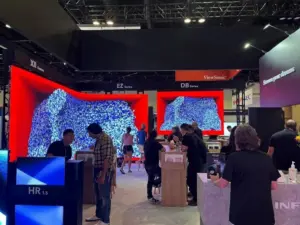The Korea Intellectual Property Association (KINPA) hosted its 16th annual conference last week, amid ongoing debates about the government’s role in regulating the export of the nation’s core intellectual property (IP).
As one of the most significant IP conferences in South Korea, this year’s KINPA event came at a critical time when the country grapples with the balance between open innovation and the safeguarding of technological sovereignty. The two-day conference attracted eminent in-house IP counsels, global IP professionals, and government officials.
The dialogue around whether patents, which are inherently public disclosures, should undergo the same rigorous review and approval process as other national core technologies for overseas sales and licensing was a focal point. This topic has gained prominence, especially after an executive from LG Display highlighted the impracticality and dubious advantage of such government oversight at the event, according to reports in The Elec.
“This conference comes at a time when the rules of the game are changing,” said Min Kyung-hyun, President of KINPA. “As we adapt to a new normal, it’s imperative that we re-evaluate how we handle the export of our intellectual property to ensure that our policies promote both growth and protection.”
Last year’s example of the US CHIPS Act, which initially restricted patent transfers to certain countries, now seems to be serving as a case study for other countries to restrict trade. The Act, after substantial feedback from industry stakeholders, had to exclude patents from its technology transfer restrictions. This precedent highlights the complexity of the issue and the need for nuanced policy-making.
The KINPA Conference 2023 is not just another industry gathering; it’s a barometer of South Korea’s intentions with IP rights management and innovation. It could shape the future of IP in South Korea and beyond. And that’s where the problem lies for the display industry. South Korea’s dominance in the display industry is a fulcrum around which the rest of the industry moves. There seems to be a general desire to over-extend the protectionism of the display industry by the government, and this is a case of when it works, the industry loves it, and when it makes it difficult, the industry wants concessions.
The best thing about protectionism and government intervention at these levels is that it opens up opportunities for the rest of the world. The display industry is a mire of IP and patents that means the negotiations to rights have to be done with sweeping licensing of portfolios to accommodate all the components of a particular process or product line. The Korean government can’t handle that amount of scrutiny or, if it can, it is going to slow down licensing procedures that are standard, even as they are complex.
At its core, patents are easily deciphered because they are public. They are an idea mill for most companies, as well as being blockers. To see them as national intelligence doesn’t make much sense. Not much about Korea’s display industry policies does because, frankly, if you want to compete against Chinese manufacturers, and you don’t want to be undercut, you should be enabling competition, not hindering it. That means open sourcing your technology and letting everyone have at it. Focus on what sells, the end product, and let the market grow.
What are you going to do? Keep hoping that your $3,000 TVs rule the roost because you say no one can see anything better on any other screen? That’s not true, and you know it. It’s the dance that the industry has with itself, the one where it spins off tales of color gamuts and brightness that only a scientist can record, but that has no bearing on the reality of the consumer experience.
The vertical integration of the display industry where the cost of developing, manufacturing, and shipping a light emitting diode all goes through the same chain of companies within one conglomerate is the real problem. At every stage, each link in the chain is either holding back or disappointing another link. A chain can be a signal of strength but, in this case, it is weighing down the future of the industry. Any greater levels of protectionism in the market, by any country, is just making those chains feel heavier and heavier.
And, let’s not forget, China announced new export controls on rare earth minerals today, requiring companies to report details like material types and export destinations. The rules will be in effect through October 2025. China produces 70% of the global rare earth supply, which is critical for electric vehicles, missiles, and other high-tech products such as displays. In 2010, China cut rare earth exports to Japan during a territorial dispute over the Senkaku/Diaoyu islands. A 2012 WTO complaint led China to eliminate quotas and other limits in 2014. Now, Beijing is tightening control again as economic competition intensifies with the US.
Of course, we can also assume that all of these maneuvers by China, Korea, and the US are part of a longer-term strategy to negotiate more equitable trading practices, whatever that means to each one. The Chinese and US presidents are meeting soon and are positioning themselves to negotiate. It makes little difference to the fact that long-term, the display industry needs to find a moment to open up, the same way the software industry in the US opened up in the late 90s and early aughts, and in the same way that you can trace a line from TSMC to ARM and Nvidia that shows how much more is achievable when the paths to innovation and manufacturing are more open.

